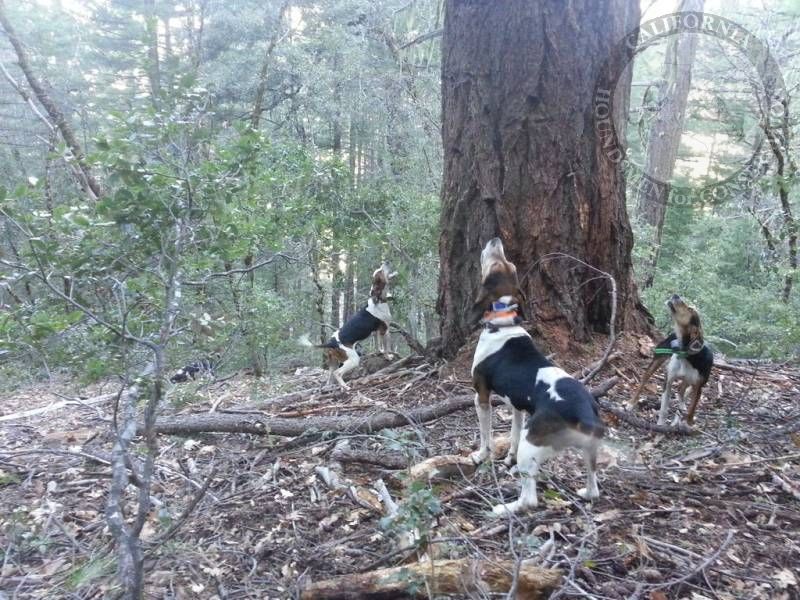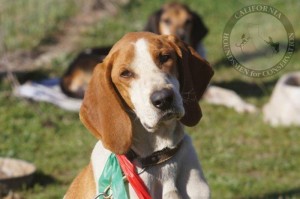Skip to content
The Truth About Hound Hunting

- Hound hunting has been legal since the inception of the California Department of Fish and Game, and is relied upon to help meet management goals. The Department’s own environmental impact documents consistently indicate that the use of dogs and radio telemetry collars does not threaten the survival or prosperity of our bear population. In fact, California’s bear population has nearly quadrupled over the past thirty years…all while the use of hounds has been permitted.
- Hound hunting is the only form of non-consumptive hunting, and is very similar to catch-and-release fishing. The emphasis is on the art and science of the methodology, and the ultimate goal of using hounds is not the harvest of wildlife, but the enjoyment gained in training, listening to, and interacting with the dogs during the pursuit. As such, hound hunters often take fewer animals than prescribed by the Department.
- Hound hunting is a highly effective form of wildlife management. The close proximity of a tree bear allows the animal’s age and sex to be determined before any attempt to harvest is made. It also allows a houndsman to determine if a female is pregnant, nursing, or has cubs so that she can be left unharmed.
- If a hunter would like to take the animal for food, the close range of the treed bear allows the hunter to ensure that the harvest of the animal is very quick and humane.
- Radio telemetry equipment is used to promote the welfare of the hound and does so primarily when the dog is no longer pursuing the bear. The equipment does not enhance the hound’s ability to catch up to the bear, nor does it hinder the bear’s ability to evade the hound…it simply allows the hunter to find his hound in deep canyons or mountainous terrain, or prevent the hound from entering into private property or upon highways. The use of radio telemetry would only be unfair if the radio telemetry collar was put on the bear, but clearly, that is not the case.
- The use of hounds is a primary means of facilitating wildlife research. In fact, hounds are used in every one of the mountain lion studies currently being conducted in California. This is due to the fact that the use of hounds is an effective, stress-free, and minimally invasive way of capturing mountain lions.
- The use of hounds is the oldest, most fundamental, and most natural form of hunting. Its essence is the interaction between the houndsman, the dog, and the animal they are pursuing. The relationship between bears and hounds can be traced back to the origins of both species. The bear may decide to climb a tree, but does so only because the instincts and physiology developed from its ancestors’ interaction with the hound’s ancestor motivates it to; this interaction is not stressful or harmful to the bear, and many bears fall asleep in the tree while they wait for the houndsman to come get their dogs so that the bear can go about its business.
- The use of hounds for the hunting of bear and bobcat requires specially bred dogs, a tremendous amount of time and training for the hound and hunter, and an extensive amount of dedication and sacrifice on the part of the hunter. It is not a lifestyle to be entered into without an abundance of deliberation, nor is it an activity that is easy or without challenge. Any success with hounds must come as the result of careful breeding of the hound and a lifetime spent learning about hounds and wildlife on the part of the hunter.
 Our hounds are very much like family. In addition to the culmination of effort and money that they represent, the time we spend with them and the memories we share forge a bond that is very difficult to describe. The relationship between hounds and their hunters is similar to that of a parent and their child because we are often there when they are born; we name them, we raise them, we remember all of their milestones during their growth, we beam with pride when they have done well, we worry about them if they are lost, and we cry like babies when they pass on.
Our hounds are very much like family. In addition to the culmination of effort and money that they represent, the time we spend with them and the memories we share forge a bond that is very difficult to describe. The relationship between hounds and their hunters is similar to that of a parent and their child because we are often there when they are born; we name them, we raise them, we remember all of their milestones during their growth, we beam with pride when they have done well, we worry about them if they are lost, and we cry like babies when they pass on.- The use of hounds allows for the timely and accurate resolution of incidents involving threats to public safety or livestock by identifying, locating, and taking only the offending animal.

 Our hounds are very much like family. In addition to the culmination of effort and money that they represent, the time we spend with them and the memories we share forge a bond that is very difficult to describe. The relationship between hounds and their hunters is similar to that of a parent and their child because we are often there when they are born; we name them, we raise them, we remember all of their milestones during their growth, we beam with pride when they have done well, we worry about them if they are lost, and we cry like babies when they pass on.
Our hounds are very much like family. In addition to the culmination of effort and money that they represent, the time we spend with them and the memories we share forge a bond that is very difficult to describe. The relationship between hounds and their hunters is similar to that of a parent and their child because we are often there when they are born; we name them, we raise them, we remember all of their milestones during their growth, we beam with pride when they have done well, we worry about them if they are lost, and we cry like babies when they pass on.